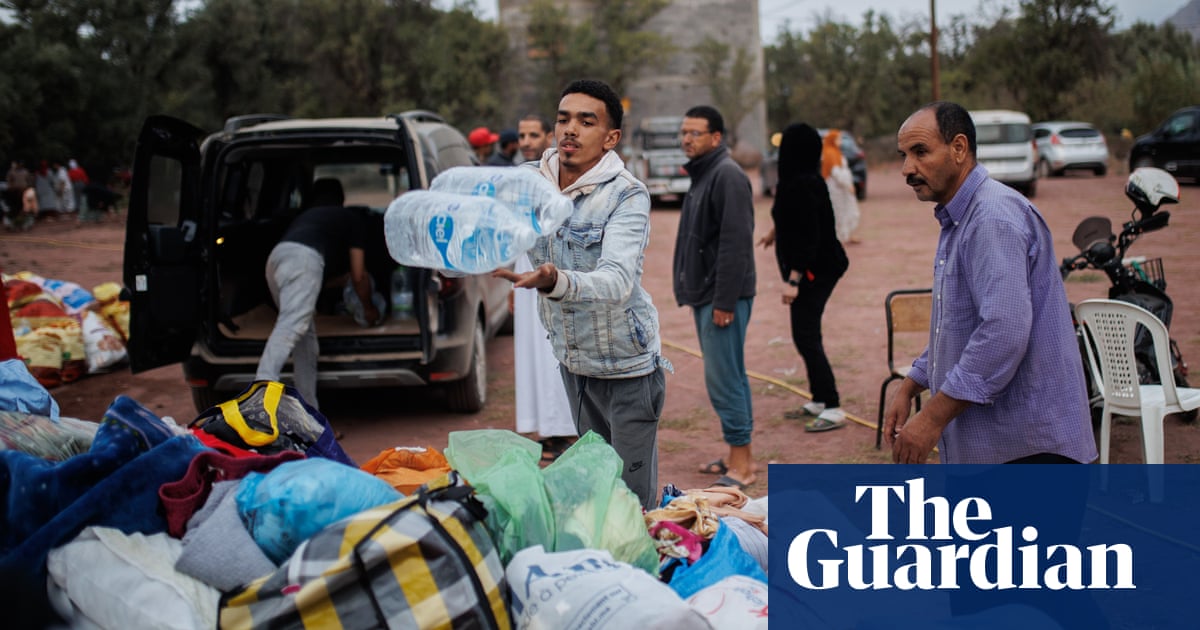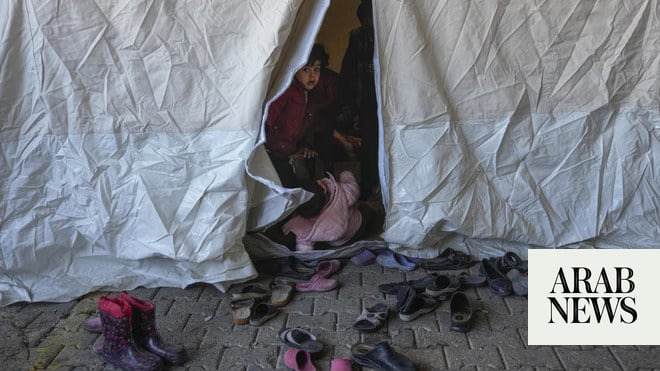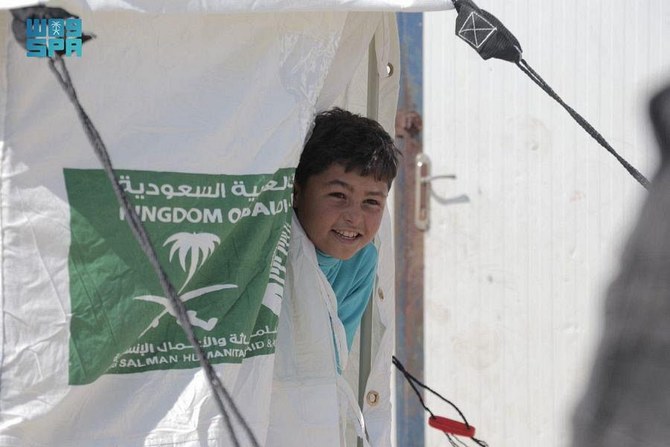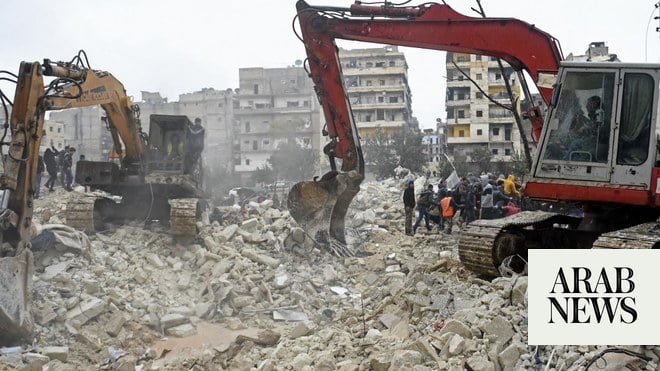
Morocco’s route nationale 10 was once a pretty road through the High Atlas mountains connecting Marrakech with Agadir on the Atlantic coast.
Winding through a series of steep-sided high valleys, it has now become one of the key aid routes to reach the communities closest to the epicentre of last week’s deadly earthquake that has now claimed 2,900 lives.
With the road partly opened since the weekend as far as the devastated community of Talat N’Yaaqoub about 12 miles (20km) from where the earthquake struck, it has also become the route of choice for thousands of ordinary Moroccans driving their own aid to the mountains amid mounting frustration with the government’s efforts.
It is not an easy road nor a safe one. In places the narrow paving has slipped into the valley below. Elsewhere boulders and landslides have fallen on the road, now pushed aside by the earthmovers that have been brought up to open the route.
Dirt trickling down the steepest slopes and signs of fresh rockfall serve as a warning of how fragile this lifeline remains – especially if rain comes.
Since it opened on Sunday night it has been transformed into an endless series of dusty traffic jams, with the traffic managed by soldiers and Berber villagers and members of the Royal Gendarmerie who have been stationed along the road to thread the huge aid trucks up into the mountain.
But mostly it is ordinary Moroccans in hundreds – if not thousands – of cars who have taken to this mountain route to help their fellow countrymen in distress.
The vehicles are loaded high with mattresses and plastic sheeting, bundles of clothes and bedding for the cold mountain nights.
At one spot where the road widened vehicles unloaded aid, including bottled water and shelters, into big piles to be taken further up the mountains.
Ambulances in convoys from Moroccan provinces jostled for space with search and rescue teams and crocodiles of army vehicles carrying generators and earthmovers on low loaders.
Amid criticism that Morocco has turned down offers of more international assistance, another question has arisen: whether too much of the wrong kind of assistance is arriving in areas whose needs have already moved on in the days since the earthquake struck.
Some of those driving aid on their own initiative have come from all over the country: from Marrakech, Casablanca, Rabat and Tangier.
At one of many halts, the Guardian met a group of 16 young men in three vans, all supporters of the Raja Casablanca football team.
“It’s taken us all day driving to get to Talat N’Yaaqoub,” explained “Ziko”, the driver of one of the vans.
“We have food and clothes and money we’ve collected for the victims of the earthquake. We felt we needed to do it.”
Two other men who work for a tourist travel company said they planned to sleep in their car before making a diversion on the way back to Marrakech to deliver aid to villages on the other side of the mountains.
In Talat N’Yaaqoub itself, once home to 3,000 people, a steady stream of helicopters cut across the mountain ridges towards Irghil, the very epicentre of the disaster, still inaccessible by road.
A Chinook landed in the town, enveloping the streets in dust. It is big enough to carry a substantial cargo of aid but when its rotors halted a few senior army officers emerged accompanied by a cameraman.
The proximity to the epicentre is obvious. While concrete buildings have remained standing in other places, in Talat N’Yakub the concrete floors of offices and shops have concertinaed and collapsed.
The extensive central market has been destroyed while the tower of a mosque teeters over ruins.
On the main street people sat on benches, some of them still in a state of profound shock. The Guardian spoke briefly to a woman who lost her husband in the quake, who said she could not speak about what happened, her face ashen.
A search-dog team worked in the ruins of a building where villagers suggested as many as 200 might have died. Recently arrived search-and-rescue teams milled around waiting to be deployed.
About 100 tents have been put up in the town, each able to old a family of 10. In the smaller villages, tents are visible in the olive groves beside the road. But shelter remains in short supply.
Hayat ait Louchine, 24, had gone to the visit the hamam when the earthquake struck. At home her six-year-old niece was killed.
“We don’t have a tent yet, and we really need one as it is so cold up here in the mountains.” she said as she pointed at a haze of clouds. “We’re worried what will happen if it rains but we don’t know who to ask to get a tent.”
She said that while the first army helicopters reached them over the weekend, the first aid only began arriving in earnest by road on Monday as the road was opened.
Nordeen ait Boulecine, who lost his mother and daughter, told a similar story. “The first helicopters came on Saturday. And brought food and some clothes and a search team. But we don’t have running water or electricity. This village has been here for a century,” he added. “For now, I can’t tell you how it will be rebuilt.”












